Judgment Day. The eve of. Part of 1
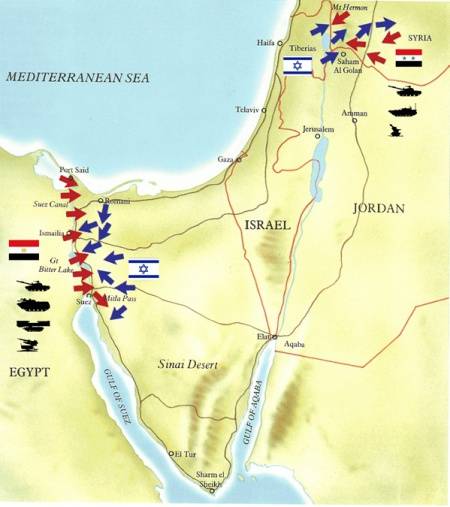
In October, 2018 will mark the 45 anniversary of the event called the “Doomsday War”. The main reason for the war was the understandable desire of Egypt and Syria to return the territories lost during the Six-Day War 1967, which Israel acquired as a result of the hostilities: the Sinai Peninsula, the Golan Heights, and Judea and Samaria (with Jesuit political correctness called today the “West Bank ").
October 6 1973, the Egyptian army launched an attack on Sinai, and the Syrian armed forces entered the Golan Heights ...
Much has been written about these events to this day. The network contains works by military historians of all stripes, the publication of scientific monographs, dissertations and books that meticulously understand certain aspects of this difficult war, articles by journalists of varying degrees of integrity and reliability, etc. However, most of the authors do not pay due attention to events preceding the war, not explain how Israel could miss military preparations in the camp of its opponents, do not give an analysis of the political, economic and military situation in these countries. In fact, historians and military experts do their work fairly conscientiously, but their research is dry, replete with materials presented in an academic style and rarely catches the eye of a wide circle of readers. This article is a lengthy selection of materials from various sources that I see as the most complete and interesting.
In 1968, the Israel Defense Forces headquarters conducted a war game. Major General Yeshayyahu Gavish - commander of the Southern Military District, "fought" for the IDF - the Israel Defense Forces, and Major General Mordechai Gur "commanded" the Egyptian troops.
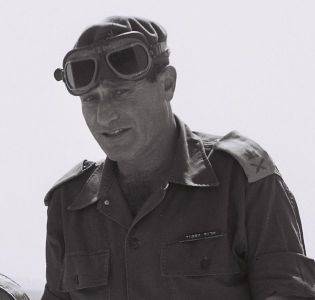
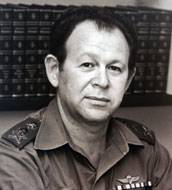
During this headquarters game, Gur crossed the Suez Canal along its entire length, advanced troops to all main directions and landed helicopter assault forces in the rear of the Israeli troops. He did everything as in five years, the army of President Anwar Sadat did exactly that. So, already in 1968, the Israeli generals knew what the enemy could do in the next war. But no conclusions were drawn from this ...
The victorious 1967 war of the year gave rise to hats and slayers in Israeli society. The IDF command began to show excessive self-confidence and carelessness, disregard for the military potential of the enemy. To good, as you know, it does not.
There are legends about Israeli intelligence officers, before whom the exploits of James Bond and Colonel Isaev-Stirlitz fade, but they are ordinary people and sometimes allow sensitive blunders for which the government has to blow off.
In a small country, there were a lot of intelligence services at the beginning of 70 — the Mossad foreign intelligence service, AMAN military intelligence, the Nativ Jewish Diaspora bureau, the Lakam industrial and scientific intelligence bureau, and the Center for Research and Political Planning under the Ministry of Foreign Affairs - Mamad . There were two questions to intelligence services - are the Arab countries going to fight with Israel again, or are they not, and if they are, then when?
Israeli Richards Sorge, each in his own country and each in his own place, worked day and night, collecting bits and pieces of materials that were transferred to the center. It was believed that analysts in the intelligence centers will combine the fragmented pieces of information into a single picture and will understand everything. Alas. Now historians can say that everything was clear and without any special "exploits"; it was enough to analyze the data on the supply of Soviet weapons to the Middle East, and it was impossible to hide these data simply because these supplies were huge. If the day and hour of the start of the war was kept under the strictest secrecy, then the very fact of preparation for war was self-evident. Both local intelligence officers and many middle-level analysts understood that a new war with the Arabs was inevitable, but no one knew exactly when it would begin.
In the top echelon of intelligence executives, in the top military and political circles, the new war was considered "unlikely." The usual logic was simple: we defeated them with one hand, the Arabs understand how weak they are of us, and now they will not turn up. Moreover, the Israeli intelligence and political leadership was aware of one important fact: the United States and the USSR do not want a new war in the Middle East.
In February, 1972 of the year, Egyptian President Anwar Sadat went to Moscow. He met with Leonid Ilyich Brezhnev, General Secretary of the Central Committee of the CPSU, Alexey Nikolayevich Kosygin, Chairman of the USSR Council of Ministers, Andrei Andreyevich Gromyko, Minister of Foreign Affairs, Andrei Antonovich Grechko, Minister of Defense, and other officials.
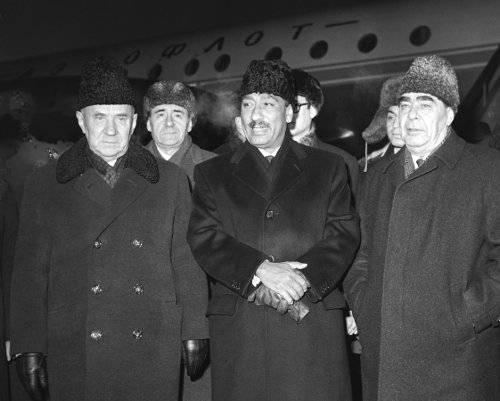
He requested new types of offensive weapons, his prayers concerned, in particular, new MiG-23 aircraft, and was refused. Defensive weapon, such as anti-aircraft missile systems - please, but offensive, and even the latest, - no. Sadat returned home disappointed, but he realized that the great powers were satisfied with the state of “no war, no peace.” Russian weapons to Egypt and Syria will continue to flow, but it turns out that this phenomenon has a framework. The results of Sadat’s visit to Moscow in general terms became known to the Israelis, and it’s quite natural that they calmed down. Yes, the Soviet Union wants to have its minions in the Middle East, yes, he is ready to feed them with weapons to keep them in constant dependence, but he will also be able to shout at them in time so that his hands will not be dismissed.
Soothing news also came from the United States. The Americans after the Six Day War began to seriously help Israel. The hope was that they would not give up in trouble. Having such data on the positions of the USSR and the USA, politicians and intelligence chiefs felt calm. Ground-scouts, who had no data on the global balance of power in the world, saw what the Arabs were doing and were worried. Their leaders, blinded by the positions of the great powers, spat on the Arabs themselves and did not notice the unrest of the scouts.
There is the concept of "information noise" in computer science. Among other things, it also includes the interference that accompanies the main signal or to which this signal is superimposed. Filters remove this noise, leaving the main signal. In intelligence, it is “noise” that plays a big role, since it contains hints on what they are trying to hide. If the entire agent "noise" - some small data on the movements of troops, new appointments, the frequency of visits of Allied generals, vacation schedules of military personnel, fluctuations in the intensity of military procurement, random slips of politicians, bold articles by journalists - analysts did not screen out, but carefully collected and put it together, then Israel on Yom Kipur would not be taken by surprise.
Here is a simple example: until February 1973, the Syrian border was very restless, but suddenly the Syrians died down. Even Palestinian militants stopped worrying border guards. Who will say, why would it? But the well-known Israeli intelligence list of the military-political meetings of the leaders of the USSR, Syria, Jordan and Egypt:
2-3 in May 1973 - Syrian President Hafez Asad flies to Moscow for a day and comes back with Marshal Pavel Stepanovich Kutahov, Commander of the USSR Air Force.
9 May - Egyptian Defense Minister Ahmed Ismail Ali visits Damascus on his way home from Iraq.
19 May - Sadat arrives in Damascus and spends seven hours there.
June 6 - Syrian military delegation headed by Defense Minister Mustafa Tlas arrives in Cairo.
12 June - Sadat again flies to Damascus to meet with Assad.
June 18 - Abdel Rifai, uncle of the Jordanian Prime Minister, the special envoy of King Hussein, arrives in Cairo.
June 30 - Rifai travels to Damascus officially to restore diplomatic relations between countries.
19 July - Rifai once again arrives in Cairo.
September 12 is a trilateral meeting of Arab leaders in Cairo.
This graph could be suggestive. And a very glaring fact: in June, on Soviet transport ships sailed to Syria tank Moroccan army brigade (30 tanks). After all, not for maneuvers! At the time, the Directorate of Military Intelligence realized that “But, they have been winners of victory laurels, fighters from the cup of the world are drinking” (c) A.S. Pushkin.
The generals entering politics carried with them a sense of military superiority and confidence. Yigal Allon, the deputy prime minister, said simply: “Egypt has no military capabilities.”
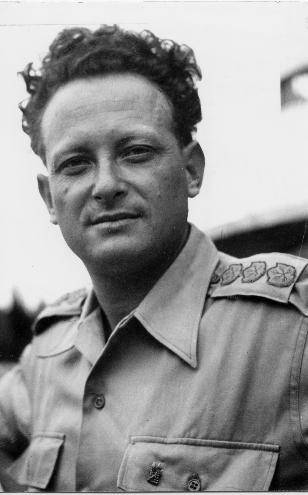
The newspaper Maariv 13 July 1973 published an article by Yitzhak Rabin. The future prime minister wrote:
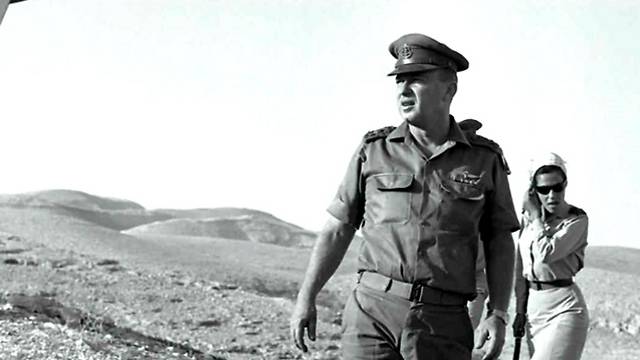
The real positions in the Arab world at that time were as follows. Jordan, which has never been in the zone of Soviet influence, wanted peace and quiet. Lebanon, which looked more at Western Europe than at the countries of the socialist camp, did not want to fight. Egypt, Syria and Iraq, which after the defeat of 1967, turned out to be even more tied to the Soviet Union, wanted to fight. In their opinion, the defeat was accidental, we need revenge, Allah is with us and the Russian anti-aircraft missile system, we will win. Syria was not preparing for war because of altruistic compassion for Palestinian refugees. Syrians, like many other Arabic-speaking nations, felt uncomfortable under the pressure of Western culture, influence and wealth. For Syria, the war with Israel was a war against the West, in all its manifestations. For Syria, Israel was a western thorn in the body of the Arab East.
The only person in these Arab countries who was not eager to fight was Egyptian President Anwar Sadat himself. His biographers sometimes say that even during the life of Gamal Abdel Nasser he often disagreed with the militant course of the Egyptian leadership. Be that as it may, this “disagreement” did not reach Nasser, and Sadat made a magnificent career, finally taking over the presidency. Already at the very beginning of 70, Sadat understood that a military confrontation with Israel would not lead to anything positive. But everyone looked at this puny, short and balding dandy as the heir to the tall, imposing and loud-voiced Nasser. I had to comply. Sadat waited for the opportunity to gently wriggle out of the embrace of the USSR and his own "hawks" and stick to the quiet harbor of the Western world. The opportunity has not turned up yet. His own people, excited by friendship with the great mighty Soviet Union and the ideas of the Arab brotherhood, were eager to fight against the Jews. As for Syria, this poor provincial country, which has neither minerals, nor the Suez Canal, nor the vast expanses, nor the excess population, just had to have a livelihood. Nothing rallies the people and raises the prestige of leadership, as a stable external enemy. Nothing distracts from its own poverty and stagnation, as the presence of a constant restless border with a neighbor. If Syria had not fought with Israel, this state would have been remembered as often as the Republic of Mauritius.
The leaders of the USSR, as many modern historians believe, and Sadat understood during his visit to Moscow, did not want another “hot” war in the Middle East, but it was profitable for them to keep this region as one of the ranges of the cold war. The Kremlin drank honey, watching as the United States got bogged down in Vietnam. And here again, the Americans need to wrestle with how to behave in the Middle East. Western Europe was not at all taken into account here. Europeans continued to lose their African and other overseas colonies and were very afraid of nuclear war. At the beginning of the 70s, the overall foreign policy situation in the Soviet Union was very pleased. Czechoslovakia was pacified in the 1968 year, and no one else even tried to "turn history back. " You could easily compete with America, and why not do it in the Middle East? Recall once again that the USSR did not need Arab oil, but the United States and Europe needed it and needed it very much.
In the USSR, the maxim of Stanislavsky that the gun hanging on the wall in the first act of the play must be shot in the last, was not applied to the situation in the Middle East and it was believed that Egypt, Syria and Iraq could be pumped up to infinity and this would not serious will not. Armament will be stored in warehouses and in hangars, sparkle at maneuvers and parades, but into battle - no, no, only with the permission of the USSR. And in general, this is just an aid to "countries of socialist orientation." The Arab mentality, in spite of the “One Thousand and One Nights” fairy tales translated into Russian, remained as incomprehensible to the Russians as the Jews.
The Arabs stockpiled weapons for a specific purpose - to defeat Israel. Historians believe that in general terms, the plan for the upcoming full-scale war against the Jewish state among the leaders of Syria and Egypt matured in the 1972 year, if not in the 1971.
After the defeat of 1967, Jordan was not a particularly valuable ally, and the Egyptians and Syrians did not take it much into account, believing to do it on their own. At the same time, rightly believed in Cairo and Damascus, Arab solidarity would induce some countries to send their troops to theaters of war, of which Iraq will be in the forefront.
Soviet military experts have well trained Arab generals to fight modern military science:
• define a military mission;
• analyze it;
• find its solution;
• translate this decision into a military plan;
• to detail the plan;
• check it through maneuvers and staff games;
• develop operational orders.
As is known, in 1972, Sadat ordered to send the bulk of Soviet specialists from Egypt. In fact, not all have been deleted. Participants in those events recall that some advisers remained in their places.
In any case, in December 1972, Egypt decided to extend the “military-political benefits” to the Soviet Union for five years. In Moscow, it was accepted with "understanding", so military supplies went to the required extent, economic cooperation continued, or rather gratuitous assistance. From December 1972 to June 1973, Egypt received more Soviet weapons than during 1971 — 1972.
Weapons The Soviet Union, despite the restrictions on certain points, delivered an enormous amount to Egypt and Syria. Since these supplies were generally classified, it is difficult to determine the exact number of weapons. The most ungrateful occupation of historians is to count the weapons of the warring countries - you can never get exact figures. The most cautious historians (M. Gilbert, 1993) believe that in the period from 1970 to 1973, the Soviet Union placed Egypt and Syria on 3-3,5 billion dollars. Egyptian author M. Heikal (1975) writes that during the period between the 1967 and 1973 wars, Egypt’s defense expenditures amounted to 8 billion dollars.
Military expenses by M. Gilbert, 1993:
Egypt:
1971 - 1 billion 495 million dollars,
1972 - 1 billion 510 million dollars,
1973 - 2 billion 300 million dollars.
Syria:
1971 - 176 million dollars,
1972 - 206 million dollars,
1973 - 400 million dollars.
Israel:
1971 - 1 billion 295 million dollars,
1972 - 1 billion 285 million dollars,
1973 - 1 billion 444 million dollars.
These numbers can be easily multiplied by 5 in order to understand the amount of spending in today's dollar.
In Syria, one fifth of the male population aged 18 to 45 years served in the army. It is a poor country, but 20% of gross national product was spent on defense. According to the most modest estimates, in 1972, Syria purchased weapons for 35 million dollars, and only for the first half of 1973 of the year - for 185 million. According to average estimates, during this period Egypt received 650 airplanes and 2500 tanks, and Syria - 330 airplanes and 2000 tanks.
Most of the tanks were not the latest models - T-54 and T-55, developed as early as 50-s. Advanced T-62 tanks have been supplied so far in small quantities. Most of the Arabs had tanks T-55. The T-55 is a tank armed with a 100 mm cannon, which could accurately shoot meters on the 1000. Egypt had such tanks by October 1973 of the year (estimated) 1650, and the Syrians had 1100. Night vision devices were installed on the tanks — a luxury that the IDF did not have at that time. On the T-62 was a more powerful 115 mm gun. (For comparison, on the German “Tigers” of the Second World War there was a gun with a caliber 88 mm.) The Egyptians had these tanks 100, and the Syrians had 50-60, possibly, up to 100. In addition, mainly among the Syrians, 300 T-34 remained, which the Arabs dug into the ground and used as field guns. Iraq was ready to send (and sent) 250 its T-54 and T-55 to the front, and Jordan could throw the English "Centurion" into the 100 battle. They were 105 mm gun, the range of aimed shooting which was about one and a half kilometers, that is, 500 meters more compared to the T-55. (Most of the Israeli armored forces were just such “Centurions.” The deliveries of the new T-62 to the Arabs did not greatly disturb Israel. Two such Soviet tanks fell into the hands of the IDF, Israeli tankers checked them and concluded that the T-62 is inferior to the “Centurions” .)
In addition to the T-series tanks, the Arabs received PT-76 amphibious tanks for reconnaissance, as well as self-propelled gun mounts. In total, the Arabs could have assembled more than 4000 tanks for an attack on Israel.
M. Gilbert (1993) gives the total number of tanks slightly more than 2600 in Egypt and 2000 in Syria. He also evaluates the Iraqi forces on the Syrian front in 230 tanks and Jordanian forces in 80 tanks. However, in his later work (1999), he points out that they could take part in hostilities only up to 1300 Syrian tanks, which almost corresponds to the SH Rolef (1987) data on 1400 Syrian tanks. N. Sachar (1982) believes that the Egyptians had 2000 tanks, and the Syrians had 1200. Ariel Sharon wrote (1989) that at the pre-war meeting he had been told about 1400 Egyptian tanks waiting along the canal. N. Bartov (1981) on the maps of the IDF General Headquarters, which he cites in the biography of the Chief of the General Staff David Elazar, points out to the Egyptians along the Suez Canal 2200 tanks, 2000 guns and 50 rocket batteries "ground-to-air".
As you can see, the figures in different sources differ slightly, but in general, they give a rather distinct idea about the armed forces of the armies of the opponents of Israel. These figures are quite comparable with the figures of the tank armies of the second world war.
As for the aircraft, the USSR, although it already launched the MiG-25РБ, and was armed with the MiG-23, supplied the Arabs as the main fighter MiG-21, which slowly crowded out the MiG-17. SU-7 and Tu-16 were also supplied. A Tu-16 bomber could fire air-to-ground missiles. According to various estimates, Egypt had 400-680 aircraft, while Syria had 310-500 aircraft.
M. Gilbert, 1993 - Egypt - 680 aircraft, Syria - 410,
N. Sachar, 1982 - Egypt - 550 combat aircraft, Syria - 310,
M.A. Girokhov, 2001 - Egypt - 400 combat aircraft + transport aircraft and helicopters, Syria - 500 aircraft, of which 200 fighters.
During the war, it turned out that Iraqi 12-15 also fought in the sky, Libyan and 20 Algerian fighters before 12.
In addition to tanks and airplanes, the USSR also attended to the defense of Egypt and Syria. These funds were more than diverse. The basis of the air defense system was various C-75, C-125 “Neva”, “Cube” anti-aircraft missiles and Strela-2 anti-aircraft missile systems. Self-propelled Shilka anti-aircraft guns were supplied from anti-aircraft guns. Anti-aircraft missiles were of two types - stationary and mobile on tracks or on trucks. This kit could hit both high and low flying targets. The freshest rockets already had guidance on the thermal radiation of the aircraft engine. Egypt had before 150 and Syria - before 35 anti-aircraft missile systems.
If we add to this that the Arab soldiers were armed with Soviet machine guns, grenade launchers and Kalashnikov assault rifles, then, in terms of weapons, Israel was opposed by the Soviet Army. It was supposed to fight with tanks with RPG-7 anti-tank grenade launchers and recoilless guns. A particularly dangerous innovation in the hands of the soldiers were portable “Malyutka” anti-tank missiles, which soldiers could carry on themselves along with the launcher, like a backpack on their backs. They could hit a tank a mile away. This was especially necessary for the Egyptians. Channel will force the infantry. Tanks and artillery will cross over the pontoon bridges later, which means that the soldier must first have personal means of fighting tanks. Soldiers diligently taught to use modern weapons day and night.
Strengthened the Arabs and the navy. Egyptian naval forces consisted of 122 warships of various classes, including 5 destroyers, 6 frigates and corvettes, 12 diesel torpedo submarines. An important component of the combat power of the Egyptian Navy were 20 missile boats. Due to the poorly developed repair base and shortcomings in the maintenance of the material part, missile boats could reach speeds of no more than 24 nodes (instead of 30 nodes provided by the project). Anti-ship missiles, which were armed with Egyptian boats, had a range of about 40 km, and the active radar homing head made it possible to perform post-station maneuver immediately after the launch of the missiles. Most of the ship of the Egyptian Navy was located in the naval bases of the Mediterranean Sea. The main naval bases were Alexandria, Port Said and Suez. The interaction of the Egyptian Navy with other types of armed forces has not been worked out. There were serious flaws in the organization of force management and intelligence. Little attention was paid to issues such as air and missile defense and electronic warfare in naval combat. But this is not surprising for a third world country.
The Syrian navy was under construction and included 21 ships, including 6 missile and 10 torpedo boats, 2 minesweepers and 3 patrol ships. In the course of combat training, the issues of repelling the landing of enemy amphibious assault forces were mainly worked out. In general, the naval forces of the Arab states were 3 times larger than the Israeli fleet. However, the Israeli Navy had some superiority in the number of anti-ship missile launchers. Arab boats in the missile launch range were 2 times higher than Israeli ones. It should be noted that the level of training of the Israeli Navy personnel was slightly higher than in the Egyptian and Syrian fleets.
And finally, the living force. Egypt had 650 thousand people under arms (800 thousand after mobilization), Syria had 150 thousand. When the war started, Morocco sent soldiers 1500 to the front, and Kuwait, Algeria and Saudi Arabia limited themselves to symbolic contingents. Israel could quickly mobilize 300 thousand people, but because of the holiday day directly in the army was at the beginning of the war - 11 500 people.
Israel could oppose the following to the abundance of Russian technology. Most of the Israeli tanks 1700 were the above described English "Centurions" (850). Of the American tanks were 400 units M-48 "Patton" with 105 mm cannon and 150 more recent M-60. M-48 was the same height with the Centurion, but much wider. His gun was equipped with an optical sight, which was not on the T-55. From the end of the 40s, the old IDF Sherman tanks remained in the IDF, on which the Israelis placed more modern French-made 105 mm guns. Such updated “Shermans” were 150, and another 150 tanks were Soviet-made - captured in the 1967 year T-54 and T-55. In the standard tank of that time, that in the Soviet, that in English, the 4 of a person was placed - the commander, the gunner, the loader and the driver.
The T-54 and T-55 armor piercing shells were relatively weak, only improved T-62 armor-piercing shells with stabilizers were used. In addition to quite satisfactory armor-piercing shells, Israeli tanks also had anti-tank projectiles with a cumulative head. The Israeli tank crews had another advantage - the Centurion’s ammunition consisted of 54 shells, and the T-54 or T-55 only from 33's.
The Israeli Air Force was well staffed. By the beginning of the war, there were 488-504 (according to different sources) combat aircraft in the system, mainly French Mirage, their variations and American Skyhawks and especially Phantoms going to replace them. The abundance of auxiliary transport aircraft, including, if necessary, the entire civilian fleet, was to ensure the rapid transfer of troops and cargo, and 80 helicopters were to evacuate the wounded.
With anti-aircraft missiles it was much worse. There were only ten installations. American anti-aircraft missiles MIM-23 "Hawk" were, in general, not bad, but they could not resist the Russian abundance. However, Israel believed Arab Aviation weak and did not care much about anti-aircraft guns. Israeli infantry did not have any portable anti-tank missiles.
Israeli naval forces were often called the “Cinderella” of the IDF, but even here the country was strengthening its forces. The main direction of development of the Israeli naval forces after the 1967 war was an increase in the number of ships at the expense of high-speed, highly maneuverable ships of small displacement, with rocket and artillery weapons, equipped with modern radio-electronic means. According to the Israeli command, strike groups consisting of such ships, in cooperation with aviation, could successfully accomplish the task of gaining dominance at sea in the coastal zone. By the beginning of the war, the Israeli Navy had 47 ships in two groups - the Mediterranean and the Red Sea. The Mediterranean group was based on the main naval base of Haifa and the naval base of Ashdod, the Red Sea base was based on the naval base of Eilat and in the Sharm e-Sheikh base station. In addition, the Israeli Navy had two battalions of marines, a detachment of submariners-saboteurs and 12 coastal artillery batteries (43 guns). The Israeli naval forces were based on 12 Saar-type missile boats received in 1968-1970 from France. On three small landing ships, helicopter landing sites were equipped, which, in cooperation with rocket boats, were preparing to launch attacks on surface ships and coastal targets of the enemy. In the course of combat training, the Israeli Navy prepared to solve the tasks of destroying enemy ships at sea and in bases, launching rocket and artillery strikes at coastal targets, protecting maritime communications in their operational zone, defending their coast, landing tactical and reconnaissance-sabotage landings on the coast the adversary.
The entire 1973 year, the Arabs were preparing hard for revenge. Public opinion inside Egypt pushed Sadat to war in both 1971 and 1972, but he pulled time, pleading with the Indo-Pakistani crisis, or the rearmament of the army. Cairo humorists laughed at how Sadat declared 1971 the year "decisive year", but decided nothing. But in March, a high-ranking Soviet military delegation visited Egypt, after which the Soviet P-1973 missiles began to arrive in the country. The range of the missiles allowed them to fly to the center of Israel.
Back in October 1972, Sadat appointed his old military colleague, General Ahmed Ismail Ali, Minister of Defense and Commander-in-Chief of the Egyptian Armed Forces of Egypt. The Chief of the General Staff at Ismail was Lieutenant General Saad al-Shazli, capable and aggressive military.
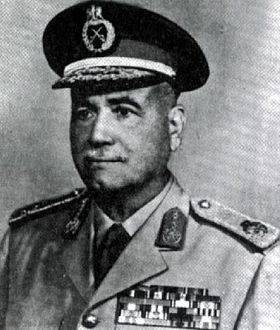
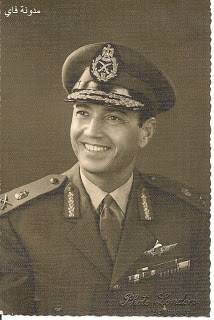
After becoming Minister of Defense of Egypt, General Ismail Ali approached the war with Israel very pragmatically. Analyzing Israel’s ability to war, Ismail identified Israeli military advantages and weaknesses. The benefits of the Egyptian saw four:
• air superiority;
• developed technologies;
• high standard of combat skills of soldiers and officers;
• guaranteed supplies of weapons from the United States.
Of the weaknesses, the general spotted the following:
• lines of communication stretched across the Sinai;
• the need to fight on several fronts;
• inability to withstand large losses due to the small population;
• the inability to fight for a long time, as it will undermine the economy;
• overconfidence.
The Arabs took a detailed look at the lessons of the 1967 war of the year and, as they thought, made all the necessary conclusions. They concluded that their main mistake in 1967 was that they allowed Israel to strike the first blow. More of this error, they decided not to repeat. Their second conclusion was that the strength of the first strike was important. It is necessary to throw all the forces at once in the first onslaught. Thirdly, in the 1967 year, the Arab actions were not coordinated, so Israel defeated Egypt, Jordan and Syria almost single-handedly. Now, the Egyptian-Syrian joint actions will be planned and adjusted to the minute. Between the Egyptians and the Syrians reigned complete mutual understanding. And finally, the last thing is to collect as many weapons from the USSR as possible.
(To be continued.)
Sources:
M. Shterenshis. Israel. The history of the state. Xnumx
Gilbert, M. The Dent Atlas of the Arab-Israeli Conflict. 6th ed., JM DENT, London, 1993.
Heikal, M. The Road to Ramadan. London - New York, Collins, 1973.
M. Zhirokhov Wings of retribution. The history of the Israeli Air Force. Xnumx
Information